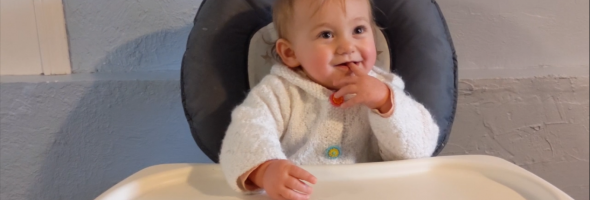Janel Manerikar
“Cheerios for Baby Jo” is a short video designed to get students reflecting
mathematically through reasonable estimation, identifying patterns as well as using
decimals and fractions and financial literacy. The video is made to suit the Grade 4 math
curriculum, but could be tailored to suit other grades. It offers a brief introduction for a
concrete, real world math problem for students to engage with.
The first part of the video introduces our problem. It’s meal time once again for
Baby Jo, but she refuses all but her favourite food: Cheerios. We learn that Jo eats 1
handful for breakfast, 2 for lunch and 3 for dinner. The video then gives three
opportunities for the class to “Pause and Reflect” on questions. The sets of questions are
designed to build on one another. After each of the first two sets, students are offered
more information. The questions that follow require students to push their mathematical
thinking further.
The first set of questions asks students to use reasonable estimation to consider
how many Cheerios are represented by a handful. They are prompted to consider: How
much is a handful? Are all handfuls the same?In the video, we can see exactly how many
cheerios are in each handful, and that those quantities somewhat differ.
For those students who are comfortable taking their reasoning a step further, we
move from estimation to more concrete values and operations. We are shown that the
total weight of a box of cheerios is 350g, and that one single cheerio weighs 0.1g.
Equipped with these facts, students can then consider: About how much does a handful of
Cheerios weigh? How many handfuls are in a box? Lastly students are shown the price of
the box of Cheerios. Questions that follow ask students: how much money does Jo spend
on cheerios in a month? Students can also do some comparative price shopping.
The learning object is meant for the class to interact with. It’s short enough to be
played through a couple of times if necessary. Questions (concerning handfuls e.g.)
require students to work with their peers to arrive at a unique answer. Cheerios can easily
be brought into the classroom for students to use as manipulatives, to reason and test
their thinking. The video can be paused as needed for the teacher to establish the story,
ask further questions, or prompt students to reflect. Teachers can also use the first part of
the video to establish a scenario, and then modify the questions to suit their lesson or
grade.
Since the object requires students to work together in groups or as a class,
conferencing is a useful method of assessment. The teacher can use a checklist to record
their observations of student understanding as groups work together to problem-solve.
Then, the teacher can select a few students they haven’t yet observed for a brief 1-to-1
conference to check understanding.
The learning object addresses the following curricular objectives:
Big Ideas:
● Fractions and decimals are types of numbers that can represent quantities.
● Development of computational fluency and multiplicative thinking requires
analysis of patterns and relations in multiplication and division.
Curricular Competencies:
● Use reasoning to explore and make connections
● Estimate reasonably
● Develop mental math strategies and abilities to make sense of quantities
● Model mathematics in contextualized experiences
● Develop, demonstrate, and apply mathematical understanding through play,
inquiry, and problem solving
Content:
● decimals to hundredths
● addition and subtraction to 10 000
● multiplication and division of two- or three-digit numbers by one-digit numbers

